Horse hacking for many riders is going out for a ride is simply an enjoyable and relaxing pastime. Horse Hacking out can be used as part of a fitting program for your horse, as well as providing variety in his exercise regime. However, a horse hack can be just as hazardous as any other equestrian activity if precautions are not observed.
Why is it Called Hacking a Horse?
Hacking or horse hacking is simply an equestrian sport. This is also called pleasure riding with a horse. The English Hackney Pony is a breed of horse developed for hacking with horses. The term hacking also refers to the riding and light exercise with a horse.
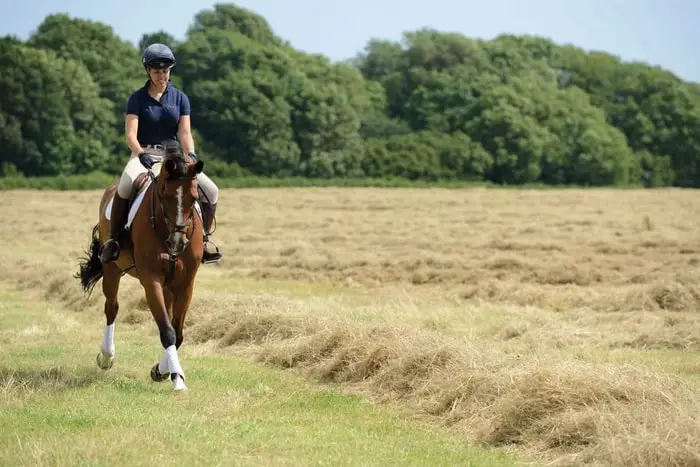
100 Safe Horse Hacking Advice
Horse hacking is a good exercise for both the rider and the horse. Safety precautions are a primary requirement for both of them.
- Equip yourself with the items listed in ‘What to Take on a ride.’
- Always tell someone where you are going and when to expect you back- try not to ride out unaccompanied, go out with at least one other person, and preferably with two others so that in the case of an emergency, there will be plenty of help on the scene.
- Take care when crossing farmland- avoid riding through fields where cattle or loose horses are grazing.
- Avoid cantering or galloping every stretch of grass you encounter- if you always canter in the same spots, your horse will soon learn these. Anticipation may make him excitable and difficult to control.
- Try to plan circular routes- doubling back on your tracks can encourage happiness in some horses.
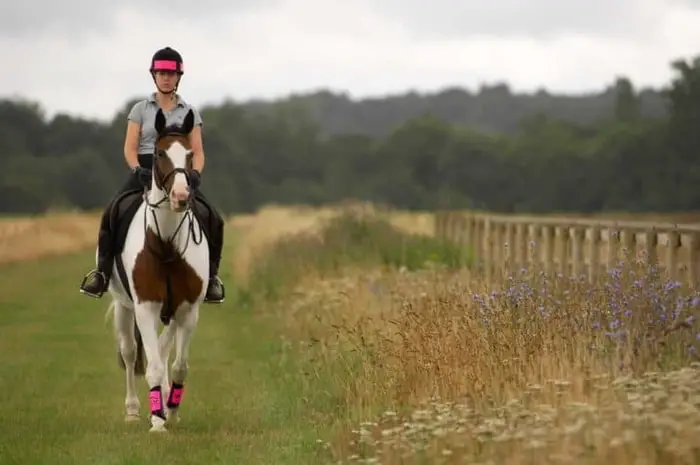
- Keep a sensible distance between each horse to avoid the risk of kicking.
- Be aware of conditions underfoot.
- Remember that the surface of bridleways can deteriorate rapidly in wet weather, becoming boggy or treacherously slippery underfoot.
- Take local advice when riding in an area new to you as to those parts best avoided or hazards to watch out for.
- Don’t go faster than a walk when riding along grass verges- they can conceal many hidden hazards such as rubbish, uneven going, and overgrown drainage ditches.
- Shorten your stirrups by 1-3 holes from their standard flatwork length- this will give you greater security and make it easier to remain in a good balance when tackling gradients.
- Do not go faster than your horse is fit enough to cope with. Do not ride sloppily.
- Be considerate to other horses and riders you meet while out and those accompanying you.
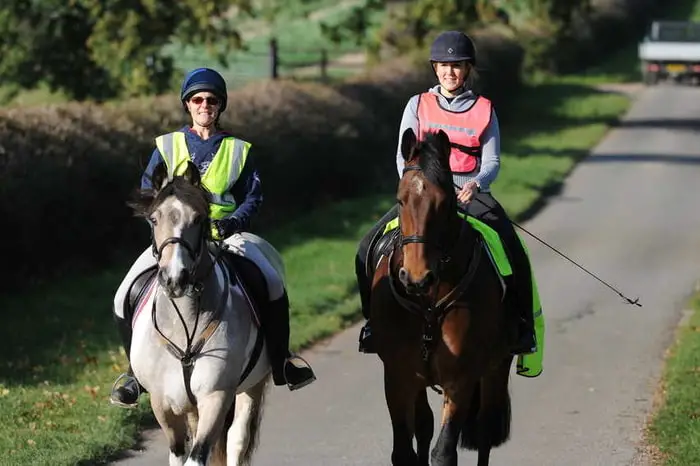
Tips and Advice When Preparing for Horse Hacking
Even if you are only going for a short ride, equip yourself with this essential kit. Most of it can be fitted into either your jacket pockets in colder weather or a bumbag if it is warmer. Use the saddle Ds to attach things to, or buy a saddle cloth with pockets to put items in.
- Pocket first aid kit.
- Folding hoof pick.
- Leadrope- neatly coiled up and clipped to one of the front saddle D-rings.
- Whistle- to draw attention to your location, blowing a whistle is less tiring than shouting and tends to carry better than your voice.
- Mobile phone- fully charged but turned off.
- Phonecard and change for payphones.
- Length for baler twine.
- Small notepad and safe writing implement- such as a piece of wax crayon.
- Neckstrap– a stirrup leather in good repair doubles as a handy grasp of the strap to help you keep your balance and as a ‘spare’ should one of your leathers break.
- Rider ID– include your name, address, next of kin and their telephone number, and the name and number of your GP and your vet. Add this information if you take any medication or have a history of problems such as allergy, diabetes, or epilepsy. Slip the card into a pocket, not the lining of your hat.
- Horse ID– if you fall off, your horse may not hang around, so it is essential that whoever finds him knows who to contact. Attach dog ID tags to a saddle D-ring and the bridle. Include your name, your own or the yard telephone number, and also that of your vet. An engraved disc is more reliable than the screw-up capsule type, which can come apart.
- Map and compass- if you plan a longer ride or explore an unfamiliar area.
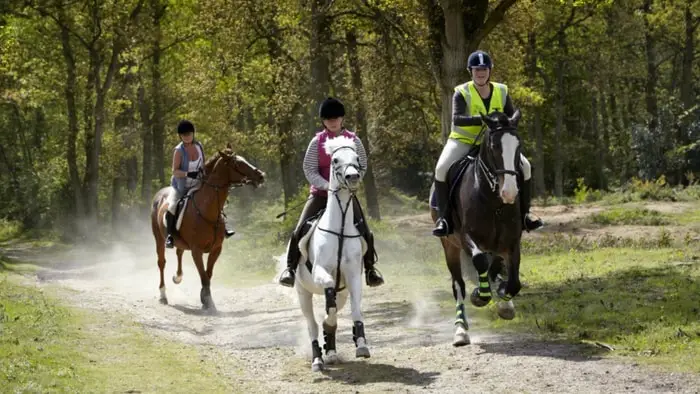
Accident Prevention During Horse Hacking
Accidents are very common during pleasure riding if you are not conscious enough.
Riding on the Roads
Horses were around long before the motor car, but this does not mean that riders have more rights than drivers: responsibility for road safety is a joint obligation. If you ride out along roads, observe the following precautions-
- Avoid using roads at peak hours.
- Keep an eye out for potential hazards.
- Treat traffic with caution.
- Don’t slop along; keep your horse moving forwards.
- Do not ride out on roads known to be dangerous.
- Use a schoolmaster.
- Do not ride more than two abreast.
- Be sensible when riding in a group.
- Give clear and accurate signals.
- Learn how to ride a roundabout.
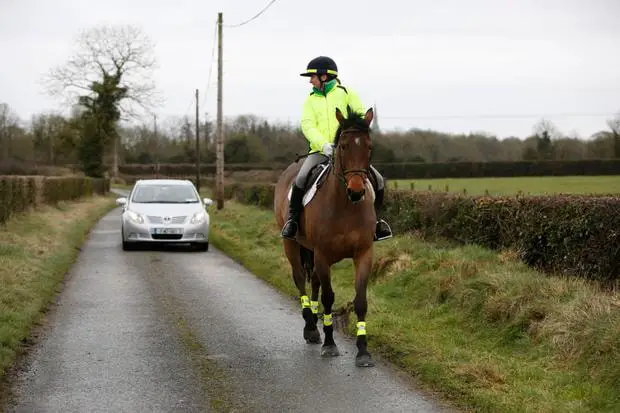
Riding and Road Safety Tips
In the UK, it is value contacting the British Horse Society to learn more about their riding And road Safety Tests. These tests aim to help educate riders and minimize the risk to them when riding on the roads. They are currently taken by around 7,000 riders each year. Even if you do not take the test, you should certainly familiarize yourself with the appropriate sections of the Highway Code and read the BHS Riding and Road, Craft Manual.
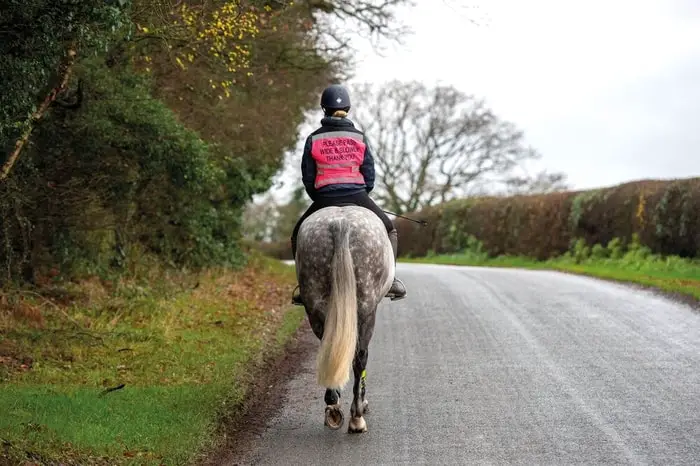
Schooling Safely
Even if your main pleasure is hacking out, making time for a little regular schooling work will help to guarantee that your horse remains supple, well balanced, obedient, and responsive, making him a safer and more enjoyable ride. Although you can incorporate some schooling exercises into your hacking, you will find that working in a suitable area offers more scope.
You may be fortunate and have access to an indoor school or outdoor arena with an all-weather surface or be able to hire such facilities locally. Alternatively, in the summer, you could use an area of grazing instead; if you do not own it, be sure to ask the landowner’s permission.
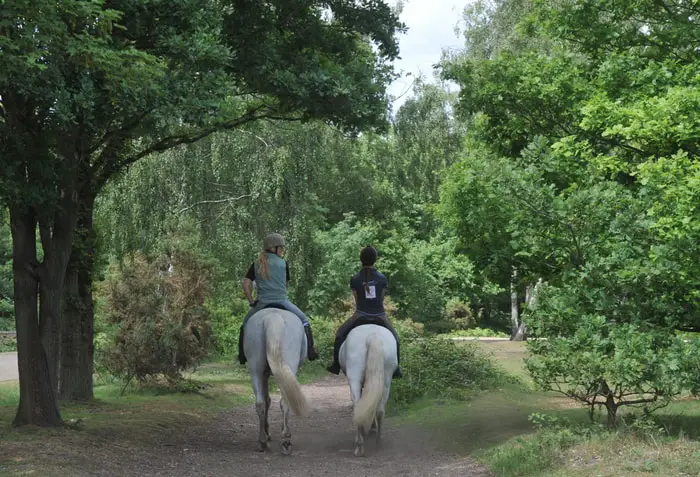
When working in a field, there are certain precautions you should take:
- Choose an area of the level, well-drained ground
- Make sure the area is well away from hazards
- Take care when the ground is hard
- Be cautious when riding on wet grass
- Watch out for members rising through the surface
- Avoid boggy patches due to uneven drainage or sprinkling
- Avoid poorly maintained surfaces
- Warm-up and cool down properly
- Keep your work varied.
- Finish on a good note, and before your horse is feeling, try.
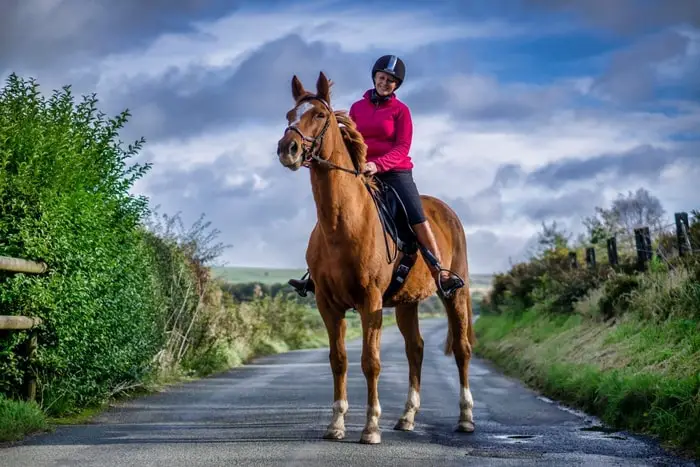
Horse Hacking: Jumping Safely
Most riders enjoy horse jumping, but it increases the potential for injury unless a few commonsense precautions are observed.
- Make sure that the riding ground conditions are suitable for jumping.
- Always warm up on the flat first.
- Know when to end the session.
- Take care in putting up fences at home.
- Don’t jump fences that have empty cups left on the wings.
- Don’t leave jump cups or pins on the ground.
- Do not build fences with a false groundline.
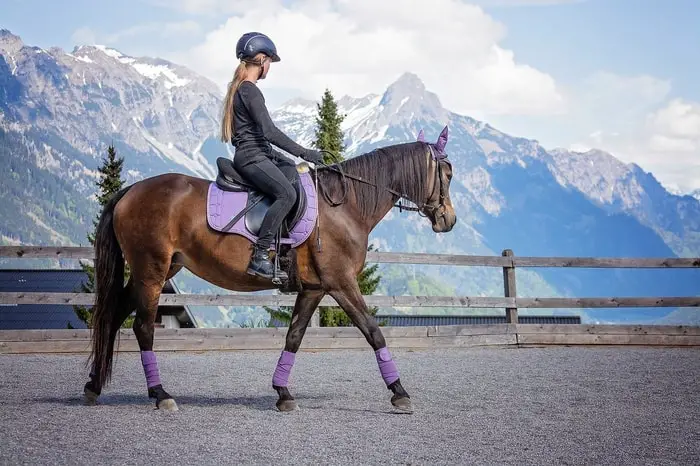
The Benefits of Horse Hacking
There are various beautiful benefits of horse hacking, both to riders and their horses. The benefits are-
- Mental health benefits of horse hacking.
- Physical benefits of horse hacking.
- Improves mental conditions.
- Helps core muscle development.
- Improves physical and mental stamina.
Final Advice on Horse Hacking
Horse hacking is an excellent physical and mental exercise for riders. Kids and amateur horseback riders can do horse hacking. You must take adequate precautions for the safety hacking. Many unwanted accidents may happen due to the rider, ill-tempered horse, bad road conditions, weather, and the season of the year. In my article, I have covered all those points.